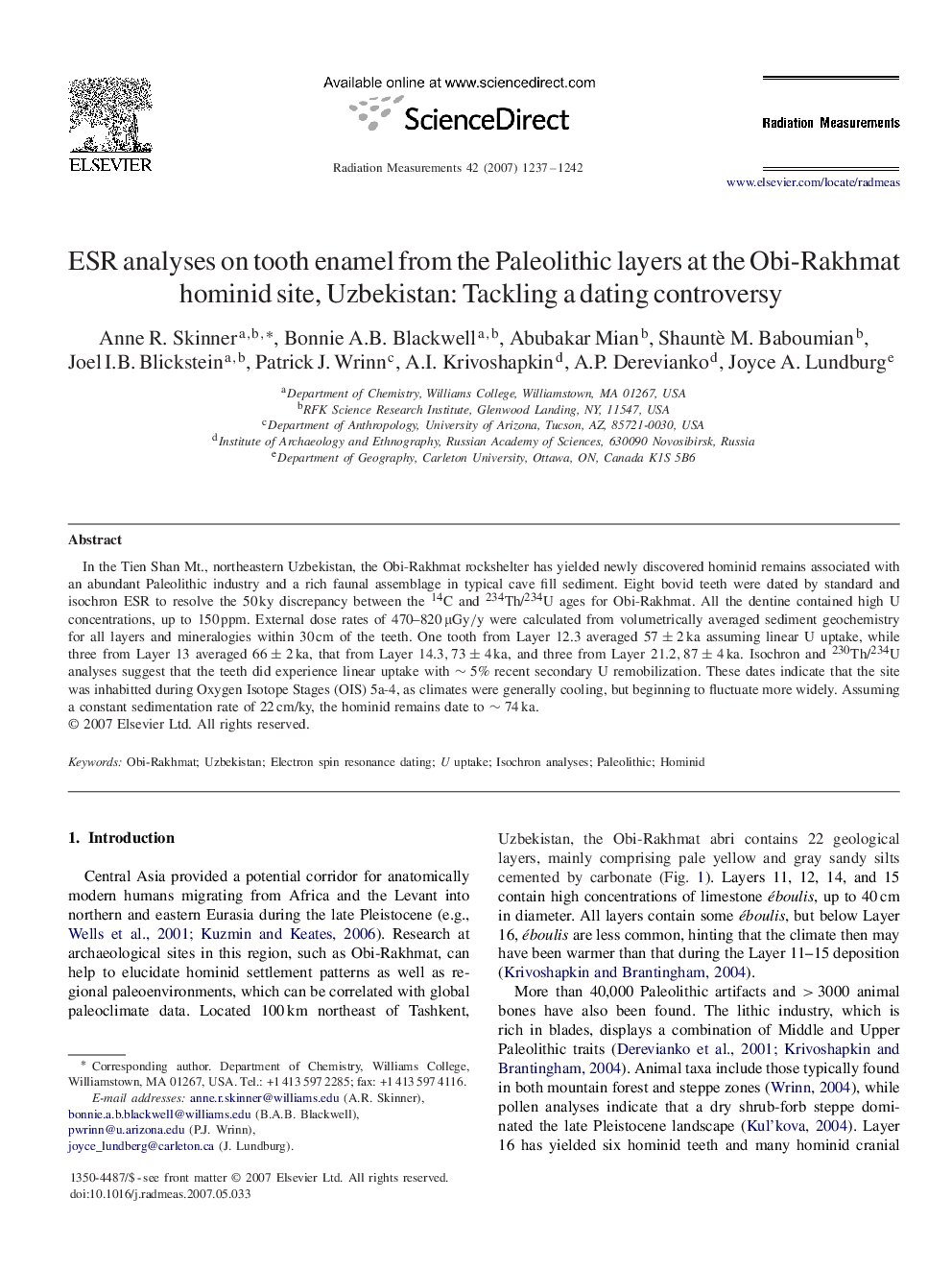| کد مقاله | کد نشریه | سال انتشار | مقاله انگلیسی | نسخه تمام متن |
|---|---|---|---|---|
| 1889015 | 1533449 | 2007 | 6 صفحه PDF | دانلود رایگان |

In the Tien Shan Mt., northeastern Uzbekistan, the Obi-Rakhmat rockshelter has yielded newly discovered hominid remains associated with an abundant Paleolithic industry and a rich faunal assemblage in typical cave fill sediment. Eight bovid teeth were dated by standard and isochron ESR to resolve the 50 ky discrepancy between the 14C and 234Th/234U ages for Obi-Rakhmat. All the dentine contained high U concentrations, up to 150 ppm. External dose rates of 470–820μGy/y were calculated from volumetrically averaged sediment geochemistry for all layers and mineralogies within 30 cm of the teeth. One tooth from Layer 12.3 averaged 57±2ka assuming linear U uptake, while three from Layer 13 averaged 66±2ka, that from Layer 14.3,73±4ka, and three from Layer 21.2,87±4ka. Isochron and 230Th/234U analyses suggest that the teeth did experience linear uptake with ∼5%∼5% recent secondary U remobilization. These dates indicate that the site was inhabitted during Oxygen Isotope Stages (OIS) 5a-4, as climates were generally cooling, but beginning to fluctuate more widely. Assuming a constant sedimentation rate of 22 cm/ky, the hominid remains date to ∼74ka.
Journal: Radiation Measurements - Volume 42, Issues 6–7, July–August 2007, Pages 1237–1242